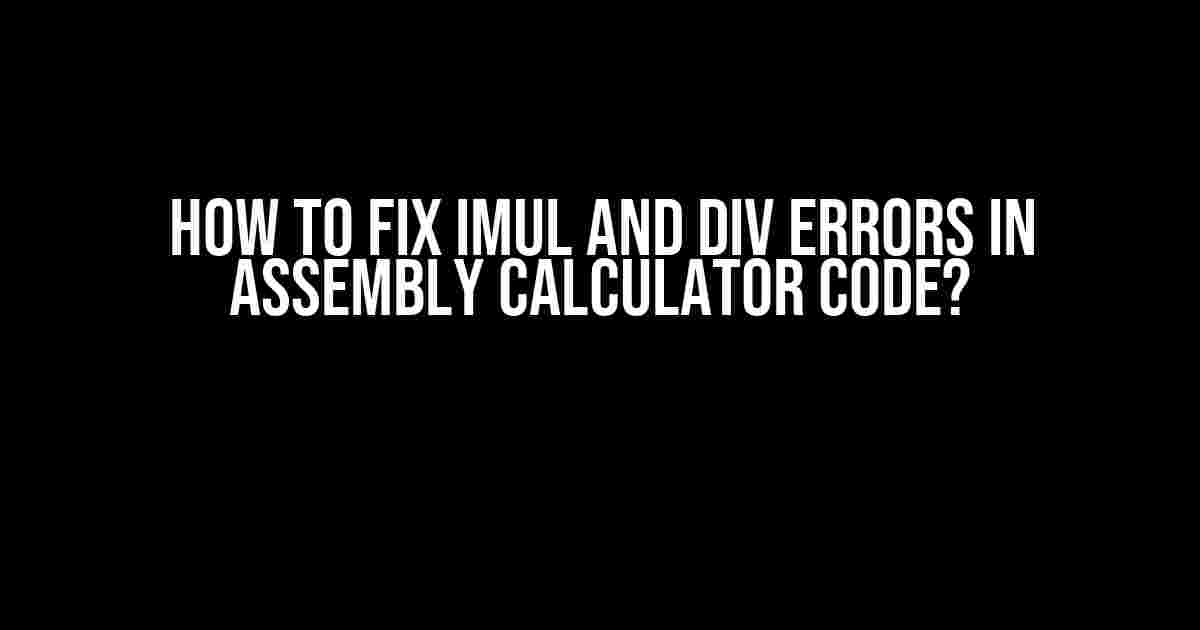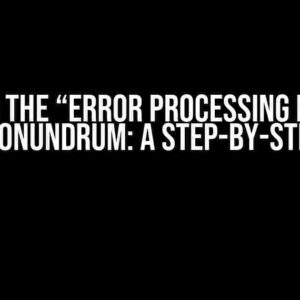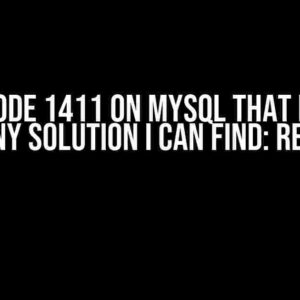Are you tired of encountering frustrating IMUL and DIV errors in your assembly calculator code? Do you wish you could write efficient and error-free code without any hassle? Look no further! In this comprehensive guide, we’ll walk you through the common causes of IMUL and DIV errors, and provide you with step-by-step instructions on how to fix them.
Understanding IMUL and DIV Instructions
Before we dive into the troubleshooting process, it’s essential to understand the basics of IMUL and DIV instructions in assembly language.
What is IMUL Instruction?
The IMUL (Integer Multiply) instruction is used to multiply two integer operands and store the result in the destination register. The syntax for IMUL instruction is:
IMUL destination, source
For example:
IMUL EAX, EBX
This instruction multiplies the contents of the EAX register with the contents of the EBX register and stores the result in the EAX register.
What is DIV Instruction?
The DIV (Unsigned Divide) instruction is used to divide one integer operand by another and store the result in the destination register. The syntax for DIV instruction is:
DIV source
For example:
DIV EBX
This instruction divides the contents of the EAX register by the contents of the EBX register and stores the result in the EAX register.
Common Causes of IMUL and DIV Errors
Now that we’ve covered the basics of IMUL and DIV instructions, let’s explore the common causes of errors related to these instructions:
- Incorrect Operand Size: One of the most common causes of IMUL and DIV errors is using incorrect operand sizes. Make sure to use the correct size of operands for the instruction being used.
- Division by Zero: Attempting to divide by zero is a common mistake that can lead to DIV errors. Always check for zero before performing a division operation.
- Overflow or Underflow: IMUL and DIV instructions can result in overflow or underflow if the result exceeds the range of the destination register. Be mindful of the range of values that can be stored in the destination register.
- Incorrect Register Usage: Using the wrong registers for IMUL and DIV instructions can lead to errors. Ensure that you’re using the correct registers and that they’re properly initialized.
- Syntax Errors: Simple syntax errors, such as missing or incorrect punctuation, can cause IMUL and DIV errors. Double-check your code for any syntax errors.
Troubleshooting IMUL and DIV Errors
Now that we’ve covered the common causes of IMUL and DIV errors, let’s move on to the troubleshooting process:
Step 1: Check the Operand Size
Verify that the operand size is correct for the IMUL or DIV instruction being used. Make sure to use the correct size of operands for the instruction being used.
; Example of correct operand size IMUL EAX, dword [EBX]
Step 2: Check for Division by Zero
Before performing a division operation, check if the divisor is zero. If it is, raise an error or handle it accordingly.
; Example of checking for division by zero CMP EBX, 0 JE error_handler DIV EBX
Step 3: Check for Overflow or Underflow
Verify that the result of the IMUL or DIV instruction does not exceed the range of the destination register. Use the JO (Jump if Overflow) instruction to check for overflow.
; Example of checking for overflow IMUL EAX, EBX JO overflow_handler
Step 4: Check Register Usage
Ensure that you’re using the correct registers for the IMUL or DIV instruction. Verify that the registers are properly initialized and that they’re not being used for other purposes.
; Example of correct register usage MOV EAX, 10 MOV EBX, 2 IMUL EAX, EBX
Step 5: Check for Syntax Errors
Finally, double-check your code for any syntax errors. Verify that the instructions are correctly formatted and that there are no missing or incorrect punctuation.
; Example of correct syntax IMUL EAX, EBX
Common IMUL and DIV Error Messages
Here are some common error messages related to IMUL and DIV instructions:
| Error Message | Cause | Solution |
|---|---|---|
| #UD (Undefined Opcode) | Incorrect instruction syntax | Check the instruction syntax and ensure that it’s correct |
| #GP (General Protection) | Incorrect operand size or access violation | Verify the operand size and ensure that the registers are properly initialized |
| #DE (Division Error) | Division by zero or overflow | Check for division by zero and handle it accordingly |
| #OF (Overflow) | Result exceeds the range of the destination register | Verify that the result does not exceed the range of the destination register |
Conclusion
In conclusion, fixing IMUL and DIV errors in assembly calculator code requires a thorough understanding of the instructions and their usage. By following the steps outlined in this guide, you can identify and fix common errors related to IMUL and DIV instructions. Remember to always check for operand size, division by zero, overflow or underflow, register usage, and syntax errors. With practice and patience, you’ll be writing efficient and error-free assembly code in no time!
So, what are you waiting for? Start troubleshooting those IMUL and DIV errors and take your assembly programming skills to the next level!
Frequently Asked Question
Are you stuck with IMUL and DIV errors in your assembly calculator code? Don’t worry, we’ve got you covered! Here are the top 5 questions and answers to help you fix those pesky errors and get your calculator up and running!
Q1: What is the IMUL instruction, and how does it cause errors in my assembly calculator code?
The IMUL (Integer Multiply) instruction multiplies two operands and stores the result in the destination operand. However, if the result exceeds the maximum capacity of the destination register, it can cause an overflow error, leading to incorrect results or crashes. To fix this, ensure that your registers are large enough to hold the result, or use a larger data type, such as 64-bit registers for large calculations.
Q2: How do I handle signed and unsigned divisions using the DIV instruction?
The DIV instruction performs unsigned division, whereas the IDIV instruction performs signed division. Make sure to use the correct instruction based on the data type of your operands. For example, if you’re working with signed integers, use IDIV to avoid incorrect results or errors. Additionally, ensure that the dividend is not zero to avoid a division-by-zero error.
Q3: What is the difference between the DIV and IDIV instructions, and when should I use each?
The DIV instruction performs unsigned division, whereas the IDIV instruction performs signed division. Use DIV for unsigned integers and IDIV for signed integers. For example, if you’re working with unsigned 32-bit integers, use DIV. If you’re working with signed 32-bit integers, use IDIV.
Q4: How can I avoid division-by-zero errors in my assembly calculator code?
Check for zero divisors before performing division operations. You can do this by comparing the divisor to zero using the CMP instruction. If the divisor is zero, skip the division operation or provide an error message to the user. You can also use the TEST instruction to check for zero and avoid division-by-zero errors.
Q5: What are some best practices to avoid IMUL and DIV errors in my assembly calculator code?
Always check for overflow and underflow conditions when performing multiplication and division operations. Use the correct instructions for signed and unsigned operations, and ensure that your registers are large enough to hold the results. Additionally, validate user input to prevent invalid operations, and use error-handling routines to catch and handle exceptions.



